#Richard Bruce Nugent
Text
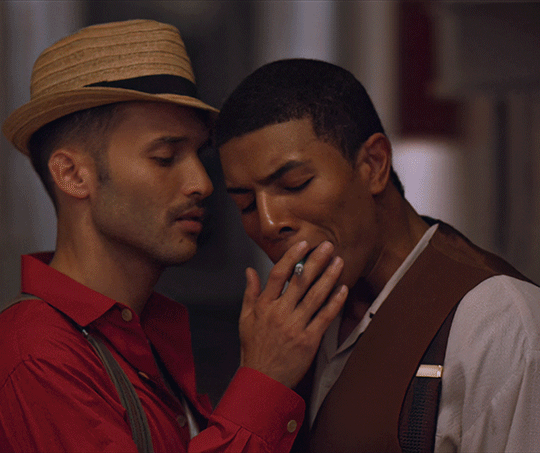
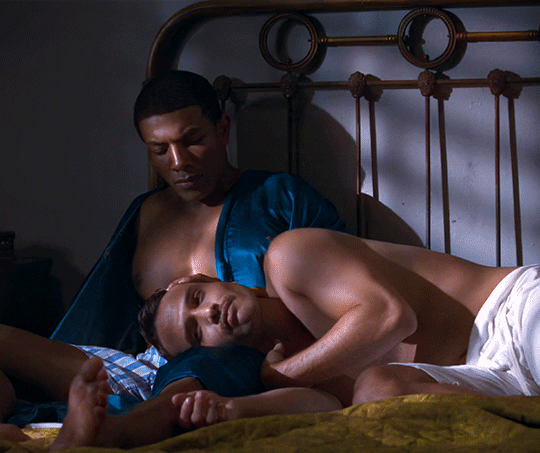
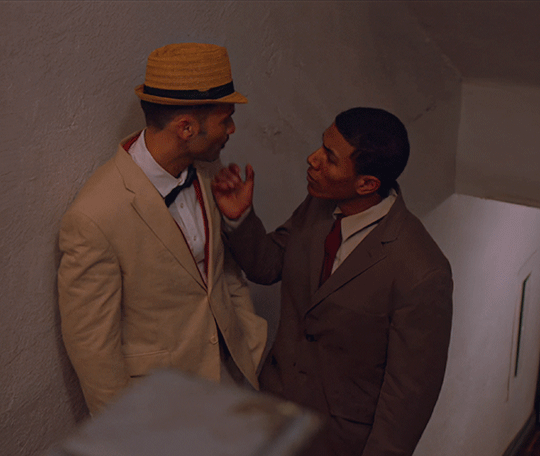
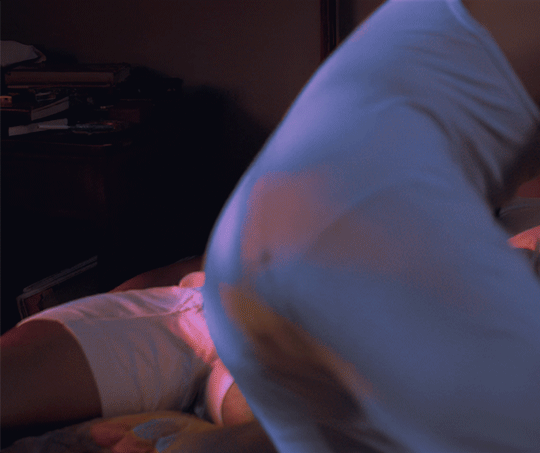
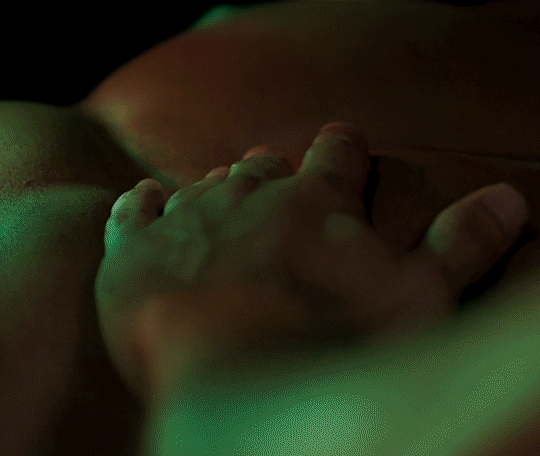
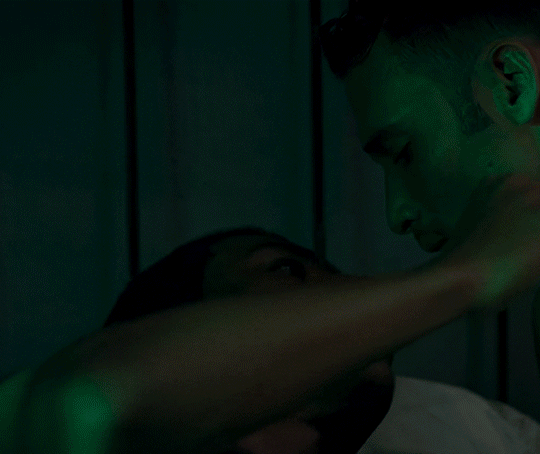

Xavier Avila as 'Alex' & Ernesto Reyes as 'Beauty'
SMOKE, LILIES AND JADE (2021) · Short Film · LGBTQ+ · Period Drama
dir(s). Deondray Gossfield · Quincy LeNear Gossfield
#xavier avila#filmedit#lgbtedit#perioddramaedit#alex x beauty#ernesto reyes#smoke lilies and jade#short film#deondray gossfield#quincy lenear gossfield#harlem renaissance#period drama#black love#richard bruce nugent#1920s#1930s#kiss#couple#affection#intimacy#desire#amor#passion#lovers#romantic#relationship#gay kiss#gay couple#bisexuality#lgbtqia
164 notes
·
View notes
Text
RICHARD BRUCE NUGENT
"My Love"
My love has hair
Like midnight,
But midnight fades to dawn.
My love has eyes
Like starlight,
But starlight fades in morn.
My love has a voice
Like dew-fall,
But dew-fall dies at a breath.
My love has love
Like life’s all,
But life’s all fades in death.
3 notes
·
View notes
Text
Richard Bruce Nugent | My Love
#blackpoets
#blackhistorymonth
My love has hair
Like midnight,
But midnight fades to dawn.
My love has eyes
Like starlight,
But starlight fades in morn.
My love has a voice
Like dew-fall,
But dew-fall dies at a breath.
My love has love
Like life’s all,
But life’s all fades in death.
His Work
POETS.ORG
Cover Photo by Manuel Michael: https://www.pexels.com/photo/man-posing-in-shirt-on-grass-14430075/
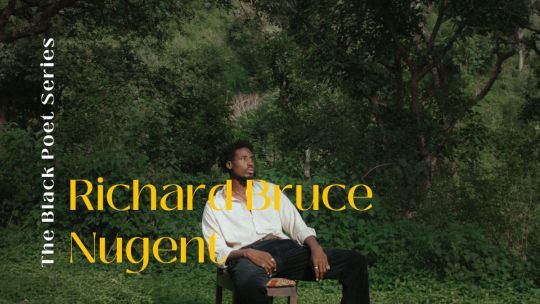
View On WordPress
1 note
·
View note
Text
MOGAI BHM- Day 12!
happy BHM! today i’m going to be talking about queer culture during the Harlem Renaissance!
Queer Culture During the Harlem Renaissance-

[Image ID: A black-and-white photograph of Gladys Bentley, a Black woman. In the photograph, she’s standing at the gate to a bar, wearing an all-white tuxedo- white dress pants, a white undershirt, and a white tuxedo jacket with coattails, as well as a white top hat. She’s carrying a magician’s cane/wand. End ID.]
The Harlem Renaissance was not just a movement that challenged racist norms. It was absolutely a movement of Black pride, but it was also in many ways a movement of Black queer pride. The queer history of the Harlem Renaissance has largely been erased from the world-at-wide’s perception of the Harlem Renaissance, but it was, according to Black professor Henry Louis Gates, “surely as gay as it was Black”.
Because of the fact that the Harlem Renaissance was based on the idea of liberating Black people from restrictive white social standards, sexuality and gender were challenged during this time period. Challenging sexual and gender norms became another outlet of Black liberation- allowing Black queer people to express their racial liberation through a means of sexual liberation.
The Harlem Renaissance came at a time when people were rebelling against Prohibition- so speakeasies became increasingly common. At these speakeasies, performances were held, and the musical nightlife of the Harlem Renaissance that developed in these speakeasies led to the development of Harlem’s queer nightlife- including drag balls.
Called “Spectacles In Color” by Langston Hughes, and commonly referred to as “fairy balls”, Harlem’s queer drag balls were huge extravaganzas. They consisted of both drag kings and drag queens, dressed to the nines, and there were contests for the most lavish costumes and performances. These balls were an explicit, unapologetic celebration of queer identity, and they also involved prizes for winners. A queer Black woman, A’Lelia Walker hosted queer parties and performances at her ‘Dark Tower’ building. Rent parties, cabarets, and other venues also hosted popular opportunities for queer people to convene and grow connections together.
It was also common for some performers to do drag as they performed at nightlife hotspots. Men dressed in long, lavish gowns, and women in tuxedos, and partied and performed together with background dancers also in drag. Perhaps the most famous of these drag performers was Gladys Bentley, a popular blues singer who often performed in full tuxedos. She sang many songs about her female lovers and relationships, and her shows featured drag performers.
Two other huge blues stars during the Harlem Renaissance were Ma Rainey and Bessie Smith- both of whom frequently and openly sang about their same-sex relationships. Ma Rainey, called “the Mother of Blues”, was arrested once for hosting a lesbian party in her home. In the 1930s, popular Blues singer Lucille Bogan made the song “B.D Woman’s Blues”, in which she sang “comin’ a time, B.D. women they ain’t going to need no men.” Short for ‘bulldager’ and ‘bulldyke’, ‘B.D’ is a Black slang for butch lesbian, and is just one example of the very racialized language of queer identity during this time. As described by queer Black woman Jeanne Flash Gray, a Harlem resident, “we were still Bulldaggers and Faggots… only whites were lesbians and homosexuals.”
Queer culture during the Harlem Renaissance was not at all limited to music and drag balls/performances- it made its way throughout prominent literature during the period. Richard Bruce Nugent, an openly gay Black author from the time period, became famous for many works including his “Smoke, Lilies, and Jade”, which was about a bisexual Black teenager and depicted bisexuality. He described himself saying "You see, I am a homosexual. I have never been in what they call 'the closet'. It has never occurred to me that [my sexuality] was anything to be ashamed of, and it never occurred to me that it was anybody's business but mine." Mae Crowdery, a Black bisexual writer, wrote bisexual poetry in “We Lift Our Voices”. Other key authors from the time period, including Langston Hughes himself and Claude McKay, were, though not very openly, queer.
Wallace Thurman was a Black author who challenged the way racism and queerphobia intersected for Black queer men- he saw the hypermasculinization of Black men, the way Black masculinity was sexualized and dehumanized- and challenged it, expressing his own form of masculinity through his literary work. Though he never came out or disclosed his personal sexuality or gender, he is noted for nonetheless challenging their norms.
The history of the Harlem Renaissance is undeniably queer- Black queer people were the heartbeat of the Renaissance, and they built queer history in that era and beyond.
Summary-
Many, many of the prominent figures of the Harlem Renaissance were queer- Langston Hughes, Claude McKay, Countee Cullen, Ma Rainey, Bessie Smith, Gladys Bentley, and many, many more
Embracing diversity of sexuality and gender became a way to become racially liberated, as shown through popular drag balls, called ‘fairy balls’, that frequented the Harlem Renaissance
Blues singers were a huge part of queer culture during the Harlem Renaissance- many of them were sapphic/lesbian, sang frequently and passionately about their lesbian relationships, and performed in drag
Queer literature during the Harlem Renaissance explored the relationships between race, gender, and sexual identity
Black and queer history are inherently intertwined, especially in the Harlem Renaissance
Tagging @intersexfairy @metalheadsforblacklivesmatter @neopronouns @benshapirosgaylover @cistematicchaos
Sources-
https://nmaahc.si.edu/explore/stories/harlem-renaissance-black-queer-history
https://www.google.com/books/edition/The_Collected_Works_of_Langston_Hughes/SsgPcfpjhBcC?hl=en&gbpv=1&dq=%22spectacles+in+color%22+langston+hughes&pg=PA208&printsec=frontcover
https://time.com/6104381/lgbtq-history-harlem-renaissance/
https://onlineexhibits.library.yale.edu/s/we-are-everywhere/page/the-queer-harlem-renaissance
https://www.nyclgbtsites.org/theme/the-harlem-renaissance/
https://www.queermajority.com/essays-all/black-and-queer-in-the-harlem-renaissance
https://scholarcommons.scu.edu/cgi/viewcontent.cgi?article=1140&context=historical-perspectives
325 notes
·
View notes
Text
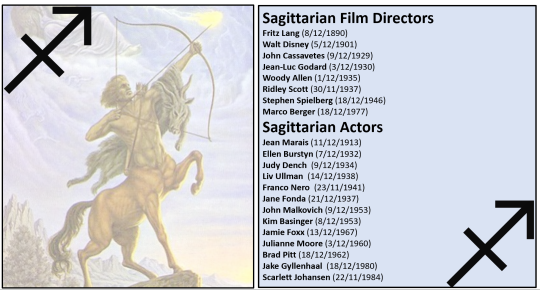




It is well known that Sagittarians make great teachers, lawyers, performers, comedians, artists, philosophers, leaders and musicians. And even with Mercury in Sagittarius, great writers too. So that runs the gamut. So this is a comprehensive round up just in case you missed how multi faceted this zodiac sign actually is, its range is wide. Top of the list are the giants like William Blake who straddles poetry, art and mysticism, and Ludwig Beethoven whose work is monumental and will still be listened to in hundreds of years. But there was also Oliver Messiaen who composed music La Constellation du Sagittaire which was his zodiac sign.
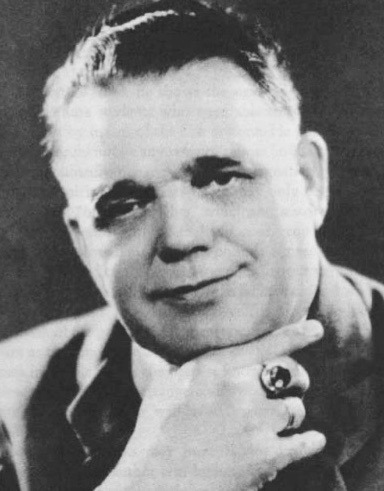
proteusastrologydotcodotuk.files.wordpress.com
Sagittarians make great magicians like Franz Bardon. He was much less known than Aleister Crowley, but nevertheless regarded as one of the most important occultists of the 20th Century, and still we have Dion Fortune, let’s not forget, who was also a Sagittarian and an acute psychologist. for a modern Sagittarian magicians look to Uri Geller. Needless to say Sagittarians also make great astrologers like Robert Hand Nik Kollerstrom and Karen Hamaker-Zondag and these are only the known charts.
Dec 2nd, is the birthday of Britney Spears, who in spite of her wobbly personality is still much loved and, when on form, delivers the goods as a performer. But so many Sagittarian singers. Note also Christine Aguilera, Taylor Swift, Miley Cyrus, and Nicki Minaj- who all love to perform. But before them some of the greats of old include Frank Sinatra, Dionne Warwick and thunder thighs (Sagittarius is linked to the thighs) herself, Tina Turner who became the ultimate Buddhist fulfilling the yearnings of her spiritual nature.
There are also some oddball singers Little Richard, Frank Zappa, Ted Nugent and Tom Waits, and there are two outstanding opera stars Maria Callas, whose voice no one can match, and Jose Carreras.
Sagittarians can even be great hedonists crazies who go off piste from time to time, but are still entertaining. There’s Jim Morrison of the Doors, Ozzy Osbourne of Black Sabbath, Jay-Z and wild man Billy Idol. Some Sagittarians in this category can come across with a certain edgy swagger like Keith Richards of the Rolling Stones.
Then there are philosopher teachers, leader and gurus like Osho, Bruce Lee and B.K.S. Iyengar also embody many quintessentially Sagittarian traits as ultimate teachers all offering some form of physical practice yoga and martial arts-which marries the higher and lower self. Iyengar said ‘my body is my temple and the asanas are my prayers’ but he also said, as a true Sagittarian, that ‘honesty is essential’ in teaching. With Mercury in Sagittarius he could sometimes be difficult to understand when speaking. But there’s also wiseacre, Noam Chomsky, who functions in dual areas as linguistic philosopher and political activist, and then there's author who popularises 'Life School' philosophy, Alain de Botton.
Then we have the artists and painters from Masaccio, to Kandinsky, Paul Klee, Jan Toroop to Lucien Freud and the ever controversial, Marina Abramovic. But one mention must go to French artist and teacher of painting, William Adolph Bougereau, His name was tarnished as being too traditional, not being ‘modern’ enough by Picasso and the art gallery owners who ganged up against him and cast him into the margins of art history as an old fuddy duddy, but he was was as skilled and technically accomplished as any of the Renaissance painters, ran his own school and more hard working and prolific than any of the Impressionists or Post-Impressionists or Cubists.
Then we have the visionary Sci Fi writers Philip K. Dick author of the stories that made it into film: Blade Runner, Minority Report and The Adjustment Bureau. Dick spoke of visions of the future that have if not come true, then are resonating widely. His imagination was as fertile as any and he worked at top speed even bringing downloads of Gnostic wisdom into novels like Valis. Also Arthur C. Clarke and C.S. Lewis were both Sagittarians. These are the big names in the field whose legacy remains strong.
And the film directors can’t be bigger Fritz Lang, Stephen Spielberg and Ridley Scott who directed some of the best known films in past decades and has just directed Napoleon. But working on a smaller, more intimate scale we should not ignore Woody Allen, John Cassavetes, and the lesser known Argentinian film director, Marco Berger.
And who is the most loved actress in the UK? Yorkshire born, Dame Judi Dench as talented and versatile as any actress can be. But world renowned actors include Liv Ullman, John Malkovich, Christopher Plummer, Brad Pitt, Kim Basinger, Julianne Moore and Jake Gylenhaal, most of them known around the world not just in their home countries.
Finally the athletes. Sagittarius is a fully developed physical sign – the hybrid centaur- so we have runner Florence Griffiths-Joyner, Donovan Bailey, and Oscar Pistorius, and football player Kylian Mbappe, along with Tennis players Boris Becker and Monia Seles.
See who else you can recognise in the collage of famous Sagittarians and in the list.
And now to end with comedian Bill Hicks, a Sagittarian, capturing the essence of a daily thought in the minds of these fiery, idealistic spirits:
“The world is like a ride in an amusement park, and when you choose to go on it you think it’s real because that’s how powerful our minds are. The ride goes up and down, around and around, it has thrills and chills, and it’s very brightly colored, and it’s very loud, and it’s fun for a while.
Many people have been on the ride a long time, and they begin to wonder, “Hey, is this real, or is this just a ride?” And other people have remembered, and they come back to us and say, “Hey, don’t worry; don’t be afraid, ever, because this is just a ride.” And we … kill those people. “Shut him up! I’ve got a lot invested in this ride, shut him up! Look at my furrows of worry, look at my big bank account, and my family. This has to be real.” It’s just a ride. But we always kill the good guys who try and tell us that, you ever notice that? And let the demons run amok …
But it doesn’t matter, because it’s just a ride. And we can change it any time we want. It’s only a choice. No effort, no work, no job, no savings of money. Just a simple choice, right now, between fear and love. The eyes of fear want you to put bigger locks on your doors, buy guns, close yourself off. The eyes of love instead see all of us as one. Here’s what we can do to change the world, right now, to a better ride. Take all that money we spend on weapons and defenses each year and instead spend it feeding and clothing and educating the poor of the world, which it would pay for many times over, not one human being excluded, and we could explore space, together, both inner and outer, forever, in peace.”
If you think the world is accelerating towards a collective psychosis, you are not alone but it could be a magnified reflection of our own fears. According to author Paul Levy to recognise that there’s a dream-like quality to reality is the first step to activating your creative higher self, and to use the Daimon- the inner genius or ‘higher’ self- is a way to counter the wetiko mind-blindness that appears to have become virulent in the world. This means taking a ‘quantum’ perspective and Sagittarius is at home with the quantum world and the weird and multiple perspectives and dimensions it brings to bear on the old solidified way of seeing reality.
#Sagittarius #Sagittarian #Jupiter #Zodiac #SagittarianWriters #SagittarianArtists #SagittarianLeaders #SagitarianSingers #SagittarianComedians
0 notes
manmetaphysical
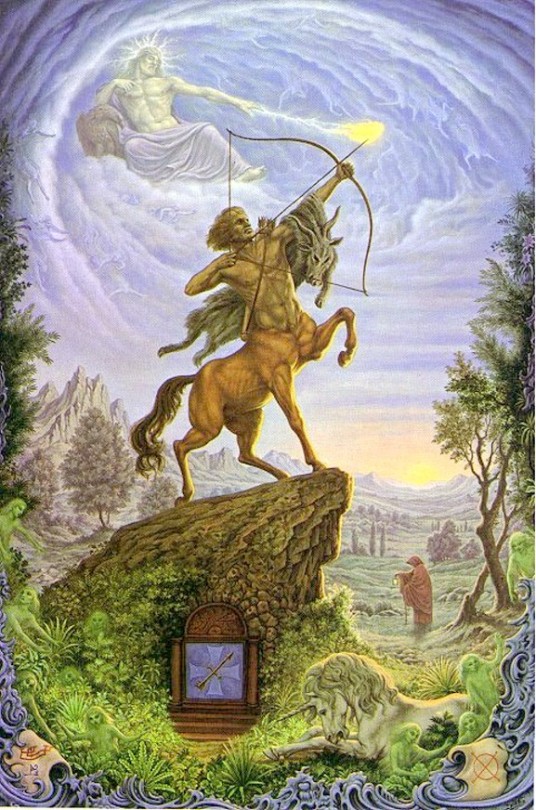
#Sagittarius#Jupiter#Zodiac#Sagittarian#SagittarianLeaders#astrology#SagittarianWriters#SagittarianSingers
7 notes
·
View notes
Text
Free Gaymila//A Brief History of Voguing
With Camila practicing her Voguing

My dear friend @emisonme told me the meaning of the Voguing, that dancing Camila has been doing lately. And here is the story
A Brief History of Voguing
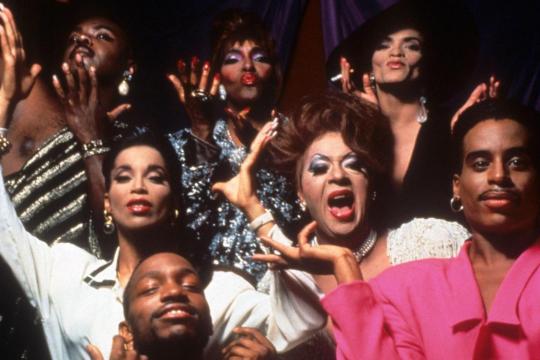
There is a dangerous myth that queer life did not exist in a public way until the 1960’s – the assumption being that LGBTQ (Lesbian, Gay, Bisexual, Transgender, Queer) identified people were “closeted” in isolation and invisibility. This could not be further from the truth. Historical scholarship has unearthed a world of saloons, cabarets, speakeasies, rent parties, and drag balls that existed since the late 1800’s as spaces where LGBTQ identities were not only visible, but openly celebrated. Some of the most influential residential enclaves for these communities were in New York, one of the most notable being Harlem.
Richard Bruce Nugent, Tom Wirth, Wikimedia Commons.
At the beginning of the twentieth century, a distinctly black LGBTQ culture took shape in Harlem. The Harlem Renaissance (1920-1935) was particularly influential to this process. The intellectual, cultural and artistic movement took the neighborhood by storm, bringing with it a flurry of literature, art, and music that centered black life. Many of the movement’s leaders were openly gay or identified as having nuanced sexualities including Angelina Weld Grimké, Claude McKay, Langston Hughes, Wallace Thurman, Alice Dunbar-Nelson, Alain Locke, and Richard Bruce Nugent among others. The movement offered a new language that challenged social structures and demonstrated the ways that race, gender, sex and sexuality distinctions were actually intersecting, fluid and constantly evolving.
Over the years, Harlem continued to be a vibrant site of LGBTQ art, activism and culture. So it should come as no surprise that Harlem was the birthplace of “vogue”, a highly stylized form of dance created by black and Latino LGBTQ communities. Between the 1960’s and 80’s New York drag competitions known as “balls” transformed from elaborate pageantry to “vogue” battles. As part of this ballroom culture, black and Latino voguers would compete for trophies and the reputation of their “Houses” – groups that were part competitive affiliation, part surrogate family. Named after the famous fashion magazine, vogue took from the poses in high fashion and ancient Egyptian art, adding exaggerated hand gestures to tell a story and imitate various gender performances in categorized drag genres.
Through dance, drag queens showed how gender is a performance – they pretended to put on makeup or “beat face”, style their hair, and put on extravagant clothes. This creative performance through voguing was even used to peacefully settle disputes among rivals in an environment that assumed a degree of mutual respect and compassion. Using dance and pantomime, the voguers would “read” each other. Ultimately, the winner would be the person who “threw the best shade.”
With time, vogue changed from the “Old Way” (which emphasized hard angles and straight lines) to the “New Way” in the late 1980’s (which added elements like the catwalk, the duckwalk, spinning, bussey and enhanced hand performance). Today, New Way is characterized by more rigid movements and “clicks” or joint contortions. Vogue Fem uses similar “New Way” elements but focuses on speed, flow and stunts. Regardless of the style, voguing shows the courage of black and Latino LGBTQ communities to make an art form that goes beyond creative expression. Vogue offers a sense of identity, belonging and dignity in a world that does not fully value their lives.
The documentary Paris is Burning captures a snapshot of the history of vogue in the mid-late 1980’s. This iconic film by Jennie Livingston was a portrait of some of the most prominent voguers in New York’s ballroom scene and the challenges they faced along the lines of race, gender, class and sexuality. Although it is widely celebrated as an invaluable piece of documentary history on LGBTQ communities of color, the film remains controversial. The voguers in the film were working-class, poor and/or sex working. Some were even battling homelessness and HIV/AIDS. Yet they had to sue to be paid next to nothing for their participation in the film.
Feminists like bell hooks believe that Livingston was not critical of her position as a white filmmaker. hooks goes on to argue that without references to any subversive process that might be taking place, voguers seem to imitate the very structures that marginalize them. Other scholars maintain that the imitation used in vogue creates a black imaginative space where aesthetics and LGBTQ life can be explored in all its complexity.
These complicated issues of race, representation and appropriation in relation to vogue continue today. They are important to address in order to keep traditions that are at once black, brown and LGBTQ and debunk the myth that LGBTQ lives of color were never publicly lived.
_____
Yeah folks. the Voguing has to do with the Black and Latin LGBT community and Camila has been promoting it. I'm waiting for the day when she be free enough to be herself and talk about it freely, but in the meantime, I'm waiting for more of her practice
41 notes
·
View notes
Photo

BOOM! Possibilities are endless...even within restrictions...
--------------
This is the first and only edition of Fire!! Magazine. A publication dedicated to chronicling the black experience during the Harlem Renaissance. This edition contained writings by Richard Bruce Nugent, Zora Neale Hurston, and Wallace Thurman. After its quarters burned down, operations ended quickly.
Between stories of gay love and desire in the Harlem Renaissance, as well as a young black girl who becomes a prostitute, this is a must-have.
Where is the time machine to snag off a copy?
3 notes
·
View notes
Text
On this date in music history….
May 6th
1965 - The Rolling Stones
In their Clearwater, Florida hotel room, Mick Jagger and Keith Richards worked out the opening guitar riff of ’(I Can’t Get No) Satisfaction’ following Richard's purchase of a Gibson fuzz-box earlier that day. The song is considered to be one of the all-time greatest rock songs ever recorded. In 2004 Rolling Stone magazine placed 'Satisfaction' in the second spot on its list of The 500 Greatest Songs of All Time.
1971 - Dickie Valentine
British pop singer Dickie Valentine who enjoyed great popularity in Britain during the 1950s (No.1 with 'Christmas Alphabet'), was killed outright in a car crash on a single lane bridge near Crickhowell, Wales at the age of 41, together with pianist Sidney Boatman and drummer Dave Pearson, aged 42. The coroner's inquest revealed the car in which the three were travelling to have been driven in excess of 90 mph at time of impact.
1972 - Tyrannosaurus Rex
The Tyrannosaurus Rex double album 'Prophets, Seers And Sages And The Angels Of The Ages / My People Were Fair And Had Sky In Their Hair But Now Their Content To Wear Stars On Their Brows' went to No.1 in the UK. The longest title of an album ever at the time!
1973 - Paul Simon
Paul Simon set out on his first tour without partner Art Garfunkel, using The Jesse Dixon Singers as a back- up group on stage. Simon's tour of America and Europe was recorded and released as 'Live Rhymin'.
2002 - Otis Blackwell
American songwriter and producer Otis Blackwell died from a heart attack. He wrote the classic songs ‘All Shook Up’, ‘Return To Sender’, ‘Don't Be Cruel’, ‘Great Balls Of Fire’ and ‘Fever.’ Over the years, Blackwell's songs have sold more than 185 million copies.
2002 - Queen
'Bohemian Rhapsody' by Queen was voted the UK's favourite single of all time in a poll by the Guinness Hit Singles book. 'Imagine' by John Lennon was voted in at No.2 and ‘Hey Jude’, The Beatles No.3, 'Dancing Queen' by ABBA was fourth and Madonna 'Like A Prayer' was in fifth place.
2004 - The Beatles
A sale at Christie's in London, England became the most successful pop auction in the company's history after Beatles memorabilia sold for a record £788,643. The auction included a leather collar worn by John Lennon which sold for £117,250. A signed copy of a management deal with The Beatles and manager Brian Epstein sold for £122,850. A Vox Kensington guitar used by Lennon and Harrison went for £100,000. Also sold - a coloured felt-pen drawing by Lennon (£10,000), a letter with his signature (£5,500), and a pen-and-ink drawing called Happy Fish (£9,500).
2005 - Bruce Springsteen
US coffee shop chain Starbucks banned the sale of Bruce Springsteen's latest album Devils and Dust over concerns about its adult content. The retailer - which stocked CDs at its branches in the US - said it would be promoting other albums instead.
2015 - Evolution of Western Pop Music
The results of the evolution of western pop music, spanning from 1960 to 2010, was published in The Royal Society Open Science Journal. The scientists who looked at more than 17,000 songs found three music revolutions - in 1964, 1983 and 1991. In 1964 the invasion of British bands introduced a radical new rocky sound. Synthesisers, samplers and drum machines, drove a second major style shift in 1983. The third, in 1991, came about when rap and hip-hop went mainstream. The team also refuted claims that pop music was starting to sound the same.
2020 - Florian Schneider
Florian Schneider, co-founder of the highly influential electronic pop group Kraftwerk, died at the age of 73. The German quartet set the template for synthesiser music in the 1970s and 80s with songs like 'Autobahn' and 'The Model'.
2020 - Brian Howe
English rock singer Brian Howe died of cardiac arrest age 66. He is best known for replacing Paul Rodgers as the lead vocalist of Bad Company. Howe's career was jump-started in 1983 when Ted Nugent recruited him to handle lead vocals for his Penetrator album and front its subsequent world tour.
3 notes
·
View notes
Text
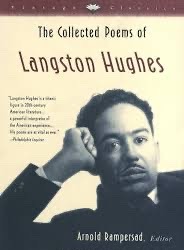
James Mercer Langston Hughes (February 1, 1902 – May 22, 1967) was a poet, social activist, novelist, playwright, and columnist from Joplin, Missouri. He moved to NYC as a young man. One of the earliest innovators of the then-new literary art form called jazz poetry, he is known as a leader of the Harlem Renaissance. He wrote about the period that “the negro was in vogue”, which was paraphrased as “when Harlem was in vogue.”
He became a prolific writer at an early age. He graduated from high school in Cleveland and soon began his studies at Columbia University. He gained notice from New York publishers, first in The Crisis magazine, and book publishers, and became known in the creative community in Harlem. He graduated from Lincoln University. He wrote plays and short stories. He published several non-fiction works. As the civil rights movement was gaining traction, he wrote an in-depth weekly column (1942-62) in The Chicago Defender.
First published in The Crisis in 1921, “The Negro Speaks of Rivers,” which became his signature poem, was collected in his first book of poetry The Weary Blues (1926). His first and last published poems appeared in The Crisis; more of his poems were published in The Crisis than in any other journal. His life and work were influential during the Harlem Renaissance of the 1920s, alongside those of his contemporaries, Zora Neale Hurston, Wallace Thurman, Claude McKay, Countee Cullen, Richard Bruce Nugent, and Aaron Douglas.
They criticized the men known as the midwives of the Harlem Renaissance: W. E. B. Du Bois, Jessie Redmon Fauset, and Alain LeRoy Locke, as being accommodating and assimilating Eurocentric values and culture to achieve social equality.
He and his fellows tried to depict the “low-life” in their art: that is, the real lives of African Americans in the lower socioeconomic strata. They criticized the divisions and prejudices based on skin color within the African American community. He wrote what would be considered their manifesto, “The Negro Artist and the Racial Mountain,” published in The Nation in 1926: #africanhistory365 #africanexcellence #omegapsiphi
0 notes
Text
…Alex turned in his doorway…up the stairs and the stranger waited for him to light the room…no need for words…they had always known each other…as they undressed by the blue dawn…Alex knew he had never seen a more perfect being…his body was all symmetry and music…and Alex called him Beauty…long they lay…blowing smoke and exchanging thoughts…and Alex swallowed with difficulty…he felt a glow of tremor…and they talked and…slept…
— "Smoke, Lilies, and Jade," Richard Bruce Nugent
1 note
·
View note
Text
LISTEN: LOVE MANY WAYS/HARD PRESSED
LISTEN: LOVE MANY WAYS/HARD PRESSED
SHADOW
by Richard Bruce Nugent (1925)
A shadow am I
Growing in the light,
Not understood as is the day.
But more easily seen
Because
I am a shadow in the light.
At Black Men Who Brunch in April, we celebrated the arrival of Spring by adopting the theme of ‘Love’ as inspiration for our discussions and activities. Rather than limit ourselves to erotic love, we considered filial, and platonic…
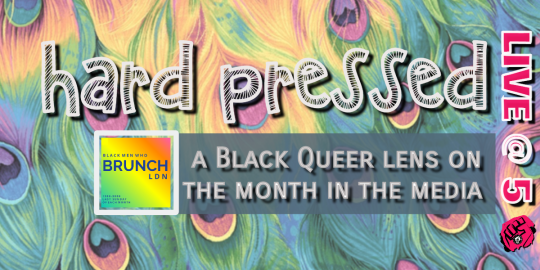
View On WordPress
1 note
·
View note
Text
RICHARD BRUCE NUGENT
"Shadow"
Silhouette
On the face of the moon
Am I.
A dark shadow in the light.
A silhouette am I
On the face of the moon
Lacking color
Or vivid brightness
But defined all the clearer
Because
I am dark,
Black on the face of the moon.
A shadow am I
Growing in the light,
Not understood
As is the day,
But more easily seen
Because
I am a shadow in the light.
0 notes
Photo

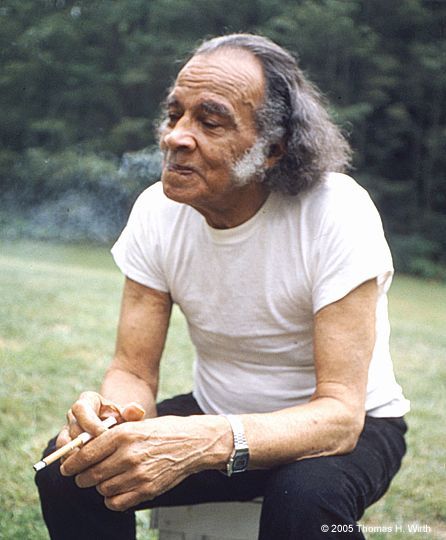
Richard Bruce Nugent (deceased)
Gender: Male
Sexuality: Gay
DOB: 2 July 1906
RIP: 27 May 1987
Ethnicity: African American
Occupation: Writer, artist, actor, dancer
#Richard Bruce Nugent#Richard Bruce#lgbt history#lgbtq#qpoc#male#gay#1906#rip#historical#black#african american#biracial#poc#writer#artist#actor#dancer
96 notes
·
View notes
Photo
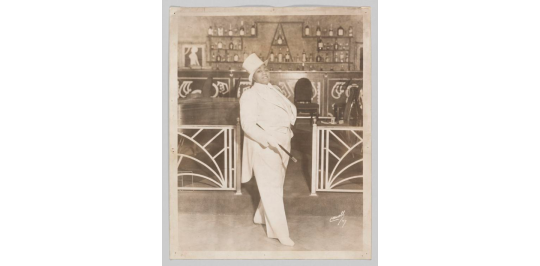

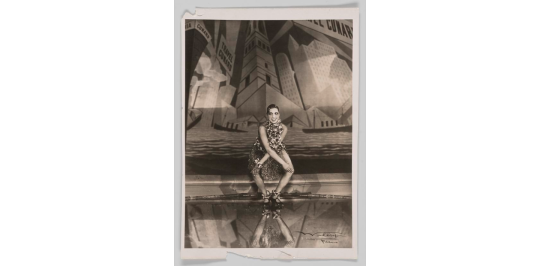

Queer Figures of the Harlem Renaissance
Gladys Bentley
Gladys Bentley was a blues singer who thrived during the Harlem Renaissance during the 20s and early 30s, becoming known as Harlem’s favourite ‘bulldagger’ and was known to have many female lovers during her life. Often singing controversial songs and known as a male impersonator for dressing in white tuxedos and top hats, she frequently performed and headlined at the famous gay speakeasy, The Clam House. Around 1930, Bentley married a white woman in Atlantic City, New Jersey. But later, Bentley went back in the closet and her all-too-brief period of fame ended in the 1930s. Ultimately, homophobia, uniting with racism, sexism, and classism, destroyed Bentley’s ability to live creatively and freely and she drew back into the closet and claimed to marry a man who denied ever being married to Bentley (Wilson 2010).
Richard Bruce Nugent
Richard Bruce Nugent was one of the few publicly out queer artists of the Harlem Renaissance and was as the ‘perfumed orchid of the New Negro Movement’ (Glick 2009:86). Nugent was known to have lived with another queer writer Wallace Thurman from the years 1926 to 1928 in Harlem, which led to the publishing of the story ‘Smoke, Lilies, and Jade’ in Thurman's black literary publication Fire!!. The story covered themes of bisexuality and more explicitly interracial male desire. Despite his openness about male attraction, Nugent married Grace Marr in 1952 until her suicide in 1969 (Wirth 2002).
Josephine Baker
Josephine Baker was a well-known singer, dancer and actress within the early years of the Harlem Renaissance. However, she struggled to find an audience within the US and predominantly grew her large career overseas in Paris. Because of this, she is often known as the first Black international star. Her song, ‘J’ai Deux Amours,’ meaning ‘I have two loves,’ became one of her biggest, in which Baker took to mean France and the United States (Goodman 2019). Baker identified herself as bisexual. She married four different times throughout her life but carried on affairs with women, including Mexican artist Frida Kahlo and French author Colette.
Langston Hughes
One of the most well-known and written about, poet, novelist and playwright, Langston Hughes, was a primary voice of the Harlem Renaissance. Although Hughes never spoke of his sexuality often in public, there are a lot of homosexual themes in his work such as ‘Blessed Assurance’ and ‘Seven People Dancing.’ Garber wrote that ‘Hughes was exceedingly cagy and evasive about his emotional involvements, even with his closest friends; as a result, though most of Hughes' biographers concede that the poet was at least sporadically homosexual, the exact nature of his sexuality remains uncertain’ (1990:326). He also often attended and was fond of the Harlem drag balls, naming them the infamous ‘spectacles of colour’.
As professor Henry Louis Gates describes, the Harlem Renaissance was, ‘surely as gay as it was black’ (1993:233). With the growth in art, jazz and blues, and drag balls, this time period was defined as ‘homosexual mecca’ or queer paradise and can be seen to have had many other LGBTQ artists that led the Harlem Renaissance. Some of the famous names including Countee Cullen, Ethel Waters, Ma Rainey, Claude Mckay, Alain Locke, Bessie Smith, James Richmond Barthé, Alberta Hunter, Alice Dunbar-Nelson, and Angelina Weld Grimké.
Gates, Henry Louis (1993) The Black Man’s Burden. In Fear of a Queer Planet: Queer Politics and Social Theory ed. Michael Warner, Minneapolis: University of Minnesota Press, pp. 230-238.
Glick, Elisa (2009) Materializing Queer Desire: Oscar Wilde to Andy Warhol. Albany: State University Press.
Jules-Rosette, Bennetta (2007) Josephine Baker in Art and Life. Chicago: University of Illinois Press.
Schwarz, A. B. Christa (2003) Gay Voices of the Harlem Renaissance. Bloomington: Indiana University Press.
Wilson, James F. (2010) Bulldaggers, Pansies, and Chocolate Babies: Performance, Race, and Sexuality in the Harlem Renaissance. Michigan: University of Michigan Press.
Wirth, Thomas H. (2002) Gay Rebel of the Harlem Renaissance. Durham: Duke University Press.
Photo 1: Unknown n.d. A silver gelatin print depicting a black-and-white image of entertainer Gladys Bentley. Bentley is depicted standing in three-quarters profile with her head turned towards the viewer, and her proper right foot forward. She is wearing a white tuxedo, top hat, and she is holding a cane under her proper right arm. Collection of the Smithsonian National Museum of African American History and Culture.
Photo 2: Unknown n.d. Photograph of Richard Bruce Nugent (also Bruce Nugent). Image courtesy Beinecke Library, Yale University.
Photo 3: Walery n.d. Photographic print of Josephine Baker performing at the Folies Bergère. Collection of the Smithsonian National Museum of African American History and Culture and National Portrait Gallery, gift from Jean-Claude Baker.
Photo 4: Unknown n.d. Langston Hughes as a young man. Schomburg Center for Research in Black Culture, Photographs and Prints Division, The New York Public Library.
#ballroom#house ballroom#lgbt ballroom#harlem renaissance#queer#gladys bentley#richard bruce nugent#josephine baker#langston hughes#queer history
240 notes
·
View notes
Photo
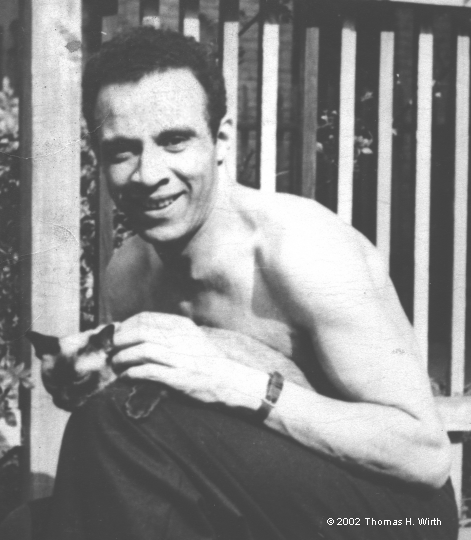


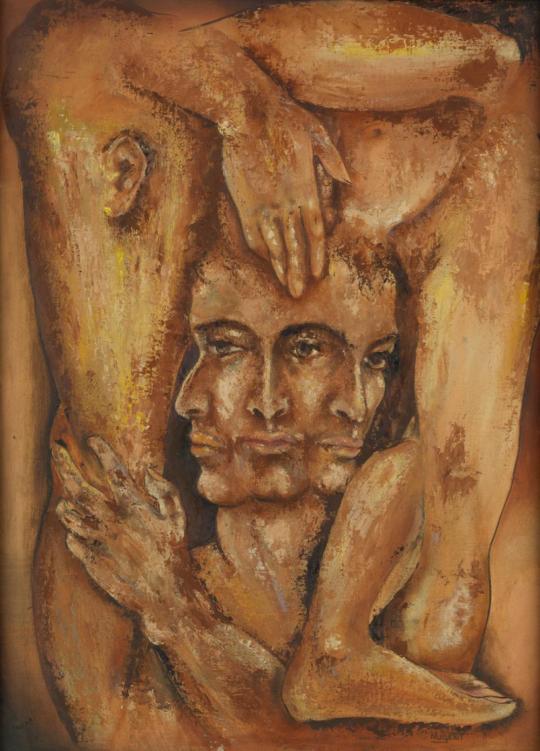

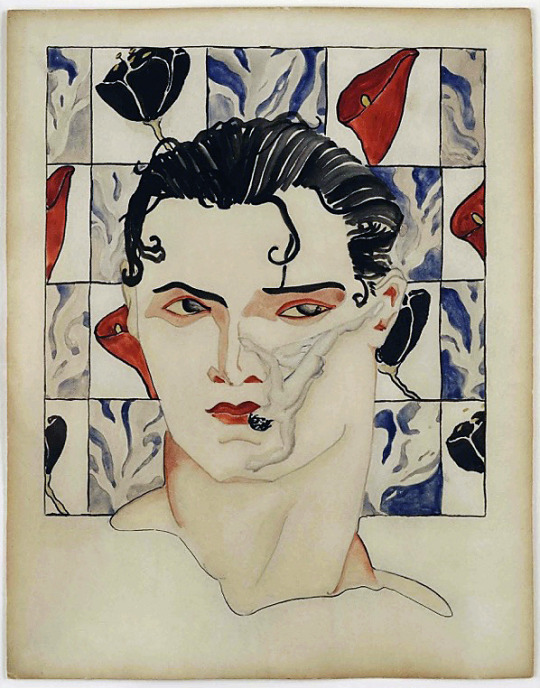

RICHARD BRUCE NUGENT
8 notes
·
View notes
Photo
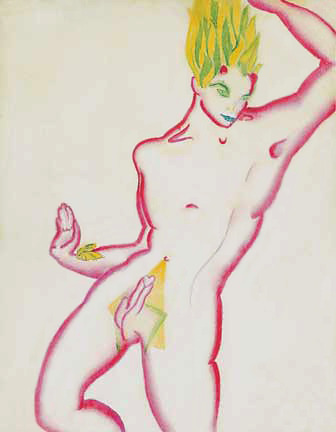
Richard Bruce Nugent, Lucifer, 1930
107 notes
·
View notes